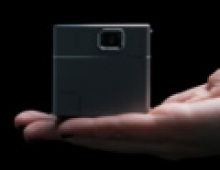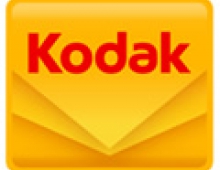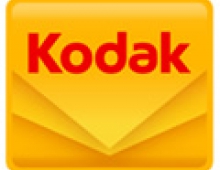
Kodak Updates Its Image
With digital cameras taking a chunk out of the traditional camera market, Eastman Kodak Co. is looking to update its image. The company is advancing in image sensors by recently partnering with IBM and purchasing National Semiconductor's imaging business unit in August, taking its shot at the digital camera and camera phone markets with CMOS technology.
"As we looked at the entire market in terms of where all sensors were going, we realized that there's a very strong opportunity working down market into some of the more consumer based applications," Michael DeLuca, manger of product marketing for Kodak image center solutions, remarked.
Through its non-exclusive, multi-year agreement with IBM, the partners will jointly develop a new family of CMOS image sensor (CIS) devices, building on IBM's foundry expertise and Kodak's charged coupled device (CCD) image sensor know-how. CCD and CIS have been longtime competitors, says DeLuca, with CIS lagging in image quality. But the Kodak exec comments that image quality isn't everything, and CIS' CMOS power, integration and cost benefits will play as a big decider for many manufactures of consumer electronics like handsets and digital still cameras.
"There's always been a question of whether image quality can line up with what you get from CCD," he said. "[But] if you are the person building the camera, you're not only looking at image quality, you're looking at a number of other things. You get to a situation where the image quality is acceptable or more than, but the integration capabilities in terms of having circuitry directly on the chip helps to advantage one technology, or the power advantage helps to advance one technology. As we bring the quality of the image into an area where it is now appropriate in a number of markets -- first starting in phones and cameras -- these become very compelling products."
Indeed, it would be easy for Kodak to continue down the CCD path, as it already owns its own CCD fab in Rochester, N.Y., where the company is headquartered. To make the jump, Kodak needed a CMOS player with a foundry. An extensive search lead the company to IBM and its 18-micron copper manufacturing process, DeLuca said.
"The opportunity arose with IBM, who was not interested in modifying a CMOS image sensor line, but really starting a CMOS image sensor line," he said. "So we had the ability to go in at the ground level and make sure that everything that they were doing was going to be optimized for what we were going to do."
In turn, IBM will be able to offer the jointly developed technology to its other foundry customers, which Ruth Mendelson, IBM 200mm fab program manager, says are already showing interest in.
"From a partnership perspective, we really think we are very complementary with what we are brining to the table. Kodak brings 25 years of experience in high-end image processor design, and IBM brings 40 years of experience in wafer processing," she said. "We really believe our collaboration with Kodak will result in a family of very competitive CMOS sensor technologies and that the agreement highlights the unique advantages and services that we can offer foundry customers."
A key element of this Kodak/IBM CIS process is Kodaks CIS pixel technology, including its proprietary pinned photodiode and 4T cell architectures. These technologies, licensed to IBM as part of this agreement, permit the manufacture of CIS pixels that approach the size of the smallest CCD pixels offered today, with improved photosensitivity and lower noise, Kodak said.
Kodak expects the end result of its CIS moves to be consumer products that can capture multi-megapixel still images, as well as 30-frame per second videos under low light photographic conditions. Kodak estimates products using the sensors to be out in the first half of 2005.
Source: www.reed-electronics.com
Through its non-exclusive, multi-year agreement with IBM, the partners will jointly develop a new family of CMOS image sensor (CIS) devices, building on IBM's foundry expertise and Kodak's charged coupled device (CCD) image sensor know-how. CCD and CIS have been longtime competitors, says DeLuca, with CIS lagging in image quality. But the Kodak exec comments that image quality isn't everything, and CIS' CMOS power, integration and cost benefits will play as a big decider for many manufactures of consumer electronics like handsets and digital still cameras.
"There's always been a question of whether image quality can line up with what you get from CCD," he said. "[But] if you are the person building the camera, you're not only looking at image quality, you're looking at a number of other things. You get to a situation where the image quality is acceptable or more than, but the integration capabilities in terms of having circuitry directly on the chip helps to advantage one technology, or the power advantage helps to advance one technology. As we bring the quality of the image into an area where it is now appropriate in a number of markets -- first starting in phones and cameras -- these become very compelling products."
Indeed, it would be easy for Kodak to continue down the CCD path, as it already owns its own CCD fab in Rochester, N.Y., where the company is headquartered. To make the jump, Kodak needed a CMOS player with a foundry. An extensive search lead the company to IBM and its 18-micron copper manufacturing process, DeLuca said.
"The opportunity arose with IBM, who was not interested in modifying a CMOS image sensor line, but really starting a CMOS image sensor line," he said. "So we had the ability to go in at the ground level and make sure that everything that they were doing was going to be optimized for what we were going to do."
In turn, IBM will be able to offer the jointly developed technology to its other foundry customers, which Ruth Mendelson, IBM 200mm fab program manager, says are already showing interest in.
"From a partnership perspective, we really think we are very complementary with what we are brining to the table. Kodak brings 25 years of experience in high-end image processor design, and IBM brings 40 years of experience in wafer processing," she said. "We really believe our collaboration with Kodak will result in a family of very competitive CMOS sensor technologies and that the agreement highlights the unique advantages and services that we can offer foundry customers."
A key element of this Kodak/IBM CIS process is Kodaks CIS pixel technology, including its proprietary pinned photodiode and 4T cell architectures. These technologies, licensed to IBM as part of this agreement, permit the manufacture of CIS pixels that approach the size of the smallest CCD pixels offered today, with improved photosensitivity and lower noise, Kodak said.
Kodak expects the end result of its CIS moves to be consumer products that can capture multi-megapixel still images, as well as 30-frame per second videos under low light photographic conditions. Kodak estimates products using the sensors to be out in the first half of 2005.
Source: www.reed-electronics.com


















